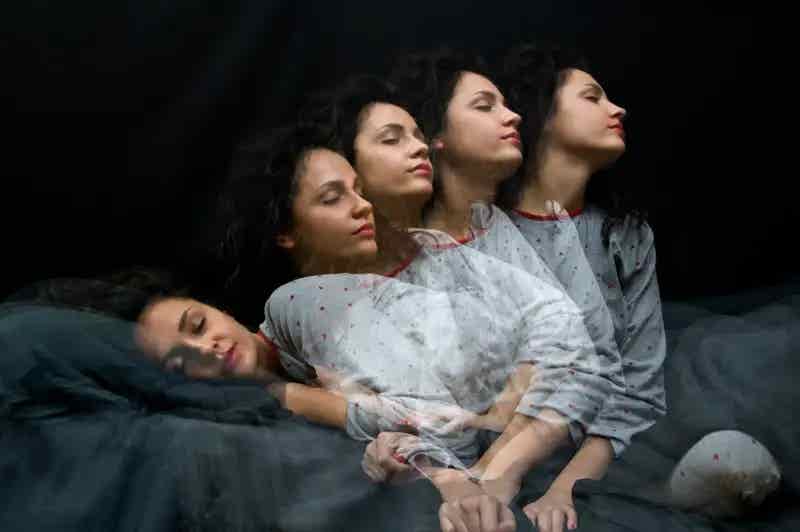Strange dreams might help your brain learn better, study finds
During sleep, we commonly experience two types of sleep phases, alternating one after the other: non-REM sleep and REM sleep.

[May 16, 2022: Roberto Inchingolo, Human Brain Project]
During sleep, we commonly experience two types of sleep phases, alternating one after the other. (CREDIT: Creative Commons)
The importance of sleep and dreams for learning and memory has long been recognized - the impact that a single restless night can have on our cognition is well known. “What we lack is a theory that ties this together with consolidation of experiences, generalization of concepts and creativity,” explains Nicolas Deperrois, lead author of the study.
During sleep, we commonly experience two types of sleep phases, alternating one after the other: non-REM sleep, when the brain “replays” the sensory stimulus experienced while awake, and REM sleep, when spontaneous bursts of intense brain activity produce vivid dreams.
The researchers used simulations of the brain cortex to model how different sleep phases affect learning. To introduce an element of unusualness in the artificial dreams, they took inspiration from a machine learning technique called Generative Adversarial Networks (GANs). In GANs, two neural networks compete with each other to generate new data from the same dataset, in this case a series of simple pictures of objects and animals. This operation produces new artificial images which can look superficially realistic to a human observer.
Cortical representation learning through perturbed and adversarial dreaming. (CREDIT: Deperrois et al. eLife 2022;11:e76384)
Related Stories
The researchers then simulated the cortex during three distinct states: wakefulness, non-REM sleep, and REM sleep. During wakefulness, the model is exposed to pictures of boats, cars, dogs and other objects. In non-REM sleep, the model replays the sensory inputs with some occlusions. REM sleep creates new sensory inputs through the GANs, generating twisted but realistic versions and combinations of boats, cars, dogs etc. To test the performance of the model, a simple classifier evaluates how easily the identity of the object (boat, dog, car etc.) can be read from the cortical representations.
“Non-REM and REM dreams become more realistic as our model learns,” explains Jakob Jordan, senior author and leader of the research team. “While non-REM dreams resemble waking experiences quite closely, REM dreams tend to creatively combine these experiences.”
Interestingly, it was when the REM sleep phase was suppressed in the model, or when these dreams were made less creative, that the accuracy of the classifier decreased. When the NREM sleep phase was removed, these representations tended to be more sensitive to sensory perturbations (here, occlusions).
According to this study, wakefulness, non-REM and REM sleep appear to have complementary functions for learning: experiencing the stimulus, solidifying that experience, and discovering semantic concepts. “We think these findings suggest a simple evolutionary role for dreams, without interpreting their exact meaning,” says Deperrois. “It shouldn't be surprising that dreams are bizarre: this bizarreness serves a purpose. The next time you’re having crazy dreams, maybe don't try to find a deeper meaning - your brain may be simply organizing your experiences.”.
Note: Materials provided above by Human Brain Project. Content may be edited for style and length.
Like these kind of feel good stories? Get the Brighter Side of News' newsletter.
Tags: #New_Discoveries, #Research, #Sleep, #Dreams, #Science, #Neuroscience, #Memory, #Brain_News, #Health_News, #The_Brighter_Side_of_News
Joseph Shavit
Head Science News Writer | Communicating Innovation & Discovery
Based in Los Angeles, Joseph Shavit is an accomplished science journalist, head science news writer and co-founder at The Brighter Side of News, where he translates cutting-edge discoveries into compelling stories for a broad audience. With a strong background spanning science, business, product management, media leadership, and entrepreneurship, Joseph brings a unique perspective to science communication. His expertise allows him to uncover the intersection of technological advancements and market potential, shedding light on how groundbreaking research evolves into transformative products and industries.



